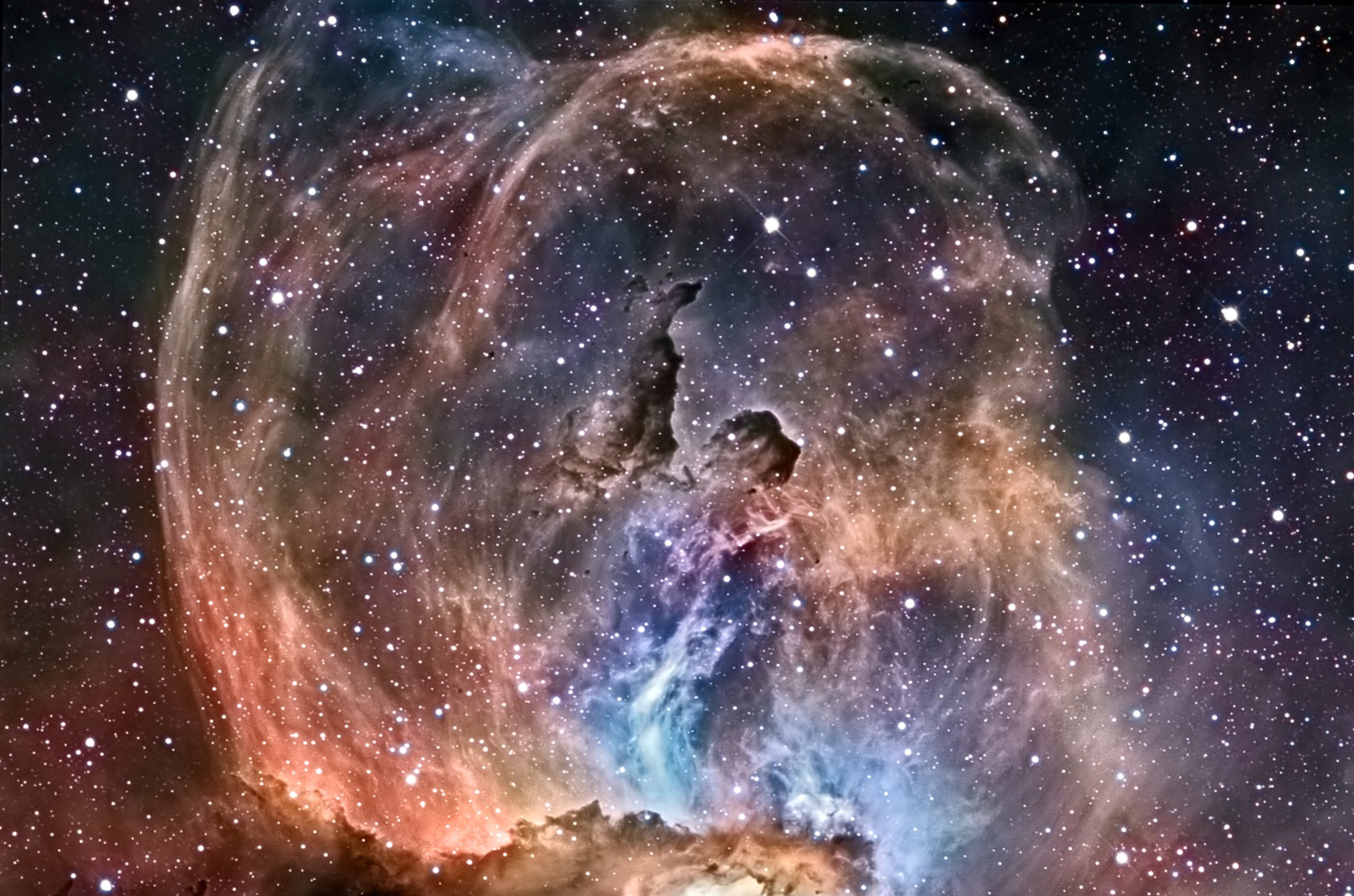Create a free profile to get unlimited access to exclusive videos, sweepstakes, and more!
Give Me Your Tired, Your Poor, Your Huddled High-Mass Stars …

Let me tell you something funny about that picture above.
Somewhere between 7,000 and 10,000 light-years away—estimates vary—lies the huge nebula NGC 3576. It’s very roughly 75 light-years across, making it one of the bigger star forming regions in the galaxy.
And that’s just the visible part of it. It appears to be part of a larger complex of dark, dense gas as well, which is pretty typical of such objects. But the part we do see is impressive enough: It has 10,000 times the mass of the Sun just in hot gas, and glows at a fierce 10 million times the brightness of the Sun as well. Many hundreds of stars are in the process of being born there, making it a fairly fecund stellar nursery.
Those giant loops above and to the left are made of gas probably compressed by the winds of the massive stars born in the nebula; they blast out fierce streams of subatomic particles, far stronger than the solar wind, and combined, slam into the surrounding gas to push it away.
Interestingly, there’s some evidence that star formation in the nebula was triggered, perhaps by the collision of another cloud or due to an exploding star. This drove a shock wave through the gas and dust, causing them to collapse to create stars. There are more younger stars to the east (left) then the west, so perhaps the triggering event came from that direction.
And while all of this is pretty cool, none of that is the reason I wanted to write about this object. The actual reason is because of the dark blobby clouds in the center. Those are denser regions, where the dust is thicker. Stars are probably being born in there as well, protected from the harsh environment of the rest of the nebula outside those clumps.
But it’s not the science of those dark clouds so much as their structure. By pure coincidence, they form a shape strongly reminiscent of the Statue of Liberty!
Do you see it? The long trunk on the left is the upraised arm of the statue (where she holds the torch), and the shorter one on the right is her head. It looks like gas streamers are her gown, and there are even stars for eyes. If you look closely it also looks like she’s wearing a crown! That’s actually gas and dust being zapped by high-energy light from massive stars; the ultraviolet radiation break apart molecules, heats them up, and causes them to flow away in streamers. That’s typical at the edges of dense dust clouds embedded in star-forming nebulae, and this erosion is why you get those long trunk-like features in the first place. They’re like cosmic sandbars in the gas flow.
The image above was taken by a team led by Steven Mazlin. Although the nebula is well-studied, and numerous images of it exist, Mazlin noted that it didn’t have a common name, like how we call M16 the Eagle Nebula, or NGC 1976 the Orion Nebula. So he proposed the Statue of Liberty Nebula, and I have to say, that works for me. The resemblance, once you see it, is pretty good!
The name is informal, but this object can now join the Bald Eagle Nebula, the Hummingbird Galaxy, and my favorite, the Flaming Skull Nebula (well, that’s what I call it, but c’mon, look at it!) in our menagerie of unofficial but obvious-when-you-see-them named objects in the sky.
I should make a list. There are a lot! Pareidolia—seeing faces and familiar shapes in objects—is a very strong psychological effect, and the patterns in nebulae and galaxies are tantalizingly familiar. It’s fun to project ourselves into the sky, and in most cases it also tells us just as much about ourselves as it does the object in question.
Tip o’ the lens cap to APOD, where I first saw this.














